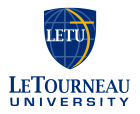Below is a summary of the abstract you submitted. Presenting author(s) is shown in bold.
If any changes need to be made, you can modify the abstract or change the authors.
You can also download a .docx version of this abstract.
If there are any problems, please email Dan at dar78@pitt.edu and he'll take care of them!
This abstract was last modified on March 19, 2024 at 11:56 a.m..

The past two decades brought a data revolution in the life sciences, especially in bioinformatic analysis of microbial genomes. Therefore, it is crucial to teach bioinformatics at the undergraduate level. However, there are few investigations on students’ perceived difficulty or confidence levels before, during, or after the training. Fortunately, our Biology Program collaborates with the SEA-PHAGES Program to help students learn these essential bioinformatics skills with well-defined tools and protocols throughout the training. We surveyed a class of 14 students after they annotated a phage genome. We received 11 responses. The survey focused on student’s perceived difficulty or confidence level before, during, and after the training. The annotation training included 3 separate sections: (1) phage biology and annotation background information, (2) start selection and gene insertion, and (3) gene function calling. The end of the survey had open-ended questions about which section they found to be most difficult and which one they found to be the easiest, whether they improved from before and after, and their overall thoughts on the entire training. Results from the survey showed a pattern: the students’ perceived confidence increased, while difficulty decreased over time. In parallel, the data included incremental increases in confidence before, during, and after the training. When asked which section was easiest, students had the most confidence with section 3. When asked which section was difficult, there were 4 responses for both sections 1 and 3; although, comments on section 3 included: 2 on software, 1 on data interpretation, and 1 on interpretation due to missing training. Overall, 82% of respondents reported improvement in their confidence in phage genome annotation.

